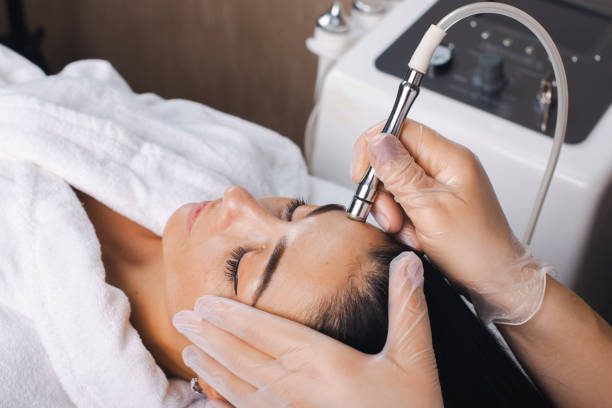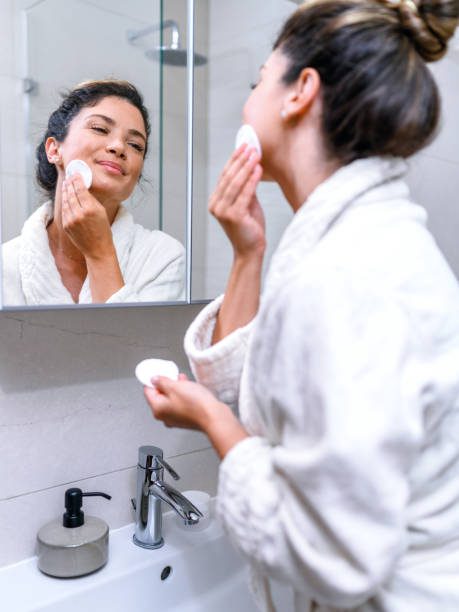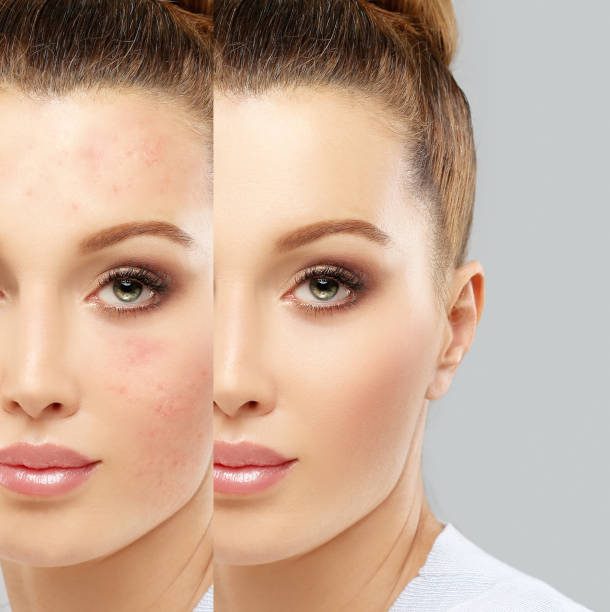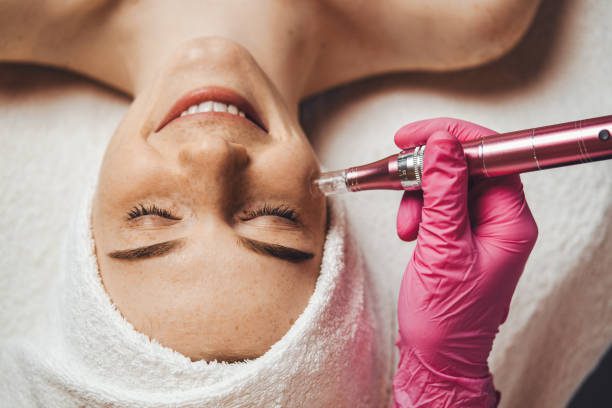⚠️ Medical Disclaimer
Important: This content is for informational and educational purposes only. It should not be used as a substitute for professional medical advice, diagnosis, or treatment. Always consult with a qualified healthcare provider before making changes to your diet, taking supplements, or if you have questions about a medical condition. Never disregard professional medical advice or delay seeking it because of information you read here.
Last Updated on February 2, 2024 by Grace Oluchi
In today’s world, people are always searching for ways to achieve younger, healthier-looking skin. One method that has gained popularity in recent years is microdermabrasion. This non-invasive cosmetic procedure uses a special tool to exfoliate the top layer of skin, revealing a smoother, brighter complexion.
Microdermabrasion is a safe and effective way to improve the texture and appearance of the skin. It can help reduce the appearance of fine lines, wrinkles, and acne scars, as well as improve skin tone and texture. The procedure is quick, painless, and requires no downtime, making it a popular choice for people with busy lifestyles.
In this article, we will explore the benefits of microdermabrasion, how it works, and what to expect during and after the procedure. Whether you are looking to improve the appearance of your skin or simply want to pamper yourself with a relaxing spa treatment, this guide will provide valuable information and insights to help you make an informed decision about whether microdermabrasion is right for you. So, read on to discover the world of microdermabrasion, and how it can help you achieve the youthful, radiant skin you deserve.
Microdermabrasion.
Microdermabrasion is a cosmetic procedure that involves the use of a handheld device to exfoliate the outermost layer of the skin. The device typically uses tiny crystals or a diamond tip to remove dead skin cells and other debris from the skin’s surface.
The procedure will take place in a dermatologist’s office or a spa by a professional. During the procedure, the skin is first cleansed and then the device is passed over the skin in a gentle, circular motion. The exfoliation process helps to stimulate the production of collagen and elastin, two proteins that are essential for maintaining healthy, youthful-looking skin.
Microdermabrasion is a non-invasive procedure and does not require any anesthesia. It is generally safe for most skin types and in use to treat a variety of skin concerns, including fine lines and wrinkles, age spots, sun damage, acne scars, and uneven skin tone.
After the procedure, the skin may be slightly red and sensitive, but this typically subsides within a few hours. It is important to avoid sun exposure and to use a good quality sunscreen to protect the skin after the procedure.
Overall, microdermabrasion is a relatively simple and effective way to improve the appearance of the skin and achieve a more youthful, radiant complexion.
Who is Microdermabrasion For?


Microdermabrasion is suitable for individuals of all skin types and ages who want to improve the overall appearance and texture of their skin. It is particularly effective for people who have fine lines and wrinkles, age spots, sun damage, acne scars, and uneven skin tone. It is also a good option for people who want to maintain healthy, youthful-looking skin.
Microdermabrasion is safe for most people, but it may not be appropriate for individuals with certain skin conditions, such as eczema, rosacea, or active acne. It is always best to consult with a skincare professional to determine whether microdermabrasion is right for you.
Cost of Microdermabrasion.


When it comes to the cost of microdermabrasion, it can vary widely depending on several factors, including the location of the spa or clinic, the experience and qualifications of the skincare professional, and the extent of the treatment. On average, a single microdermabrasion session can cost anywhere from $75 to $200, but some clinics may offer packages or discounts for multiple sessions.
It’s important to note that while microdermabrasion is a relatively affordable cosmetic procedure. Insurance may not cover it, as it is a cosmetic treatment rather than a medical one. Therefore, it’s essential to factor in the cost when deciding whether this procedure is right for you.
Preparation.
Microdermabrasion is a cosmetic procedure that exfoliates the top layer of skin to reveal newer, healthier skin. Here are the steps for preparing for microdermabrasion:
- Consult with a skincare professional: Before undergoing microdermabrasion, it is important to consult with a skincare professional. They will evaluate your skin type and condition, and determine if microdermabrasion is a suitable treatment for you.
- Avoid sun exposure: avoid sun exposure for a few days before the treatment. Sun exposure can make the skin more sensitive and increase the risk of complications during the treatment.
- Avoid other exfoliating treatments: It is important to avoid other exfoliating treatments, such as chemical peels or laser resurfacing, for at least a week before the microdermabrasion treatment. Combining these treatments can be too harsh on the skin.
- Avoid waxing: avoid waxing or other hair removal treatments for at least a week before the treatment. Waxing can make the skin more sensitive, and increase the risk of complications during the treatment.
- Cleanse the skin: It is important to cleanse the skin thoroughly before the treatment. This will help to remove any dirt, oil, or makeup, and prepare the skin for the exfoliation.
- Avoid using retinol: avoid using retinol or other retinoid-based products for at least a week before the treatment. These products can make the skin more sensitive, and increase the risk of complications during the treatment.
By following these steps, you can prepare your skin for a successful microdermabrasion treatment. It is important to discuss any concerns or questions with your skincare professional before the treatment.
How it Works.
Microdermabrasion is a cosmetic procedure that uses a specialized device to exfoliate the top layer of the skin. The device uses tiny crystals or a diamond-tipped wand to gently remove the outermost layer of dead skin cells, revealing smoother, brighter, and more youthful-looking skin.
Microdermabrasion works by using a stream of tiny crystals or a diamond-tipped wand to exfoliate the skin. The device is passed over the skin, and the crystals or diamond tip gently abrade the top layer of skin, removing dead skin cells and impurities.
As the device exfoliates the skin, it also stimulates the production of collagen and elastin, two proteins that are essential for healthy, youthful-looking skin. Collagen and elastin help to plump up the skin, reducing the appearance of fine lines and wrinkles.
Uses of Microdermabrasion.
Microdermabrasion is in use to treat a variety of skin concerns, including:


- Fine lines and wrinkles.
- Age spots and sun damage.
- Acne scars and other types of scars.
- Uneven skin tone and texture.
- Dull, dry, or rough skin.
After the microdermabrasion treatment, the skin may be slightly red and sensitive, but these side effects usually subside within a few hours. Most people can return to their normal activities immediately after the treatment.
Microdermabrasion is a safe and effective way to improve the appearance of the skin, and it can be used on all skin types. However, it is important to consult with a skincare professional before undergoing the treatment, to determine if it is a suitable treatment for your skin concerns.
Side Effects.
Microdermabrasion is generally a safe and well-tolerated cosmetic procedure, but like any cosmetic treatment, it can cause some side effects. Here are some of the most common side effects of microdermabrasion:
- Redness and sensitivity: After a microdermabrasion treatment, the skin may be slightly red and sensitive. This is a normal side effect, and it usually subsides within a few hours.
- Dryness and flakiness: The exfoliation process can cause the skin to become dry and flaky. This can be managed with moisturizers and hydrating serums.
- Bruising and swelling: In some cases, microdermabrasion can cause bruising and swelling, especially if the skin is very sensitive. This is more common in people with thin or delicate skin.
- Infection: There is a small risk of infection with any cosmetic procedure. If the skin is not properly cleaned and disinfected before the treatment, it can become infected.
- Hyperpigmentation: Microdermabrasion can sometimes cause hyperpigmentation, which is a darkening of the skin. This is more common in people with darker skin tones.
- Scarring: Although rare, there is a small risk of scarring with microdermabrasion. This is more likely to occur if the skin is not properly cared for after the treatment.
To minimize the risk of side effects, it is important to choose a qualified skincare professional who has experience with microdermabrasion. They will evaluate your skin type and condition, and determine if microdermabrasion is a suitable treatment for you. They will also provide you with instructions on how to care for your skin after the treatment, to minimize the risk of complications.
What to Expect After.
After the treatment, you can expect to see some immediate results, but the full effects may take several days to become visible. Here is a breakdown of what to expect after microdermabrasion:


- Redness and sensitivity: Immediately after the treatment, the skin may be slightly red and sensitive. This is a normal side effect, and it usually subsides within a few hours.
- Dryness and flakiness: After the exfoliation process, the skin may be dry and flaky. This is also normal and can be managed with moisturizers and hydrating serums.
- Tighter, smoother skin: You may notice that your skin feels tighter and smoother immediately after the treatment. This is because the top layer of dead skin cells has been removed, revealing fresh, new skin.
- Improved skin tone and texture: Over the next few days, you may start to notice an improvement in your skin tone and texture. Microdermabrasion can help reduce the appearance of fine lines, wrinkles, and age spots, as well as improve the overall texture of the skin.
- Increased collagen production: Microdermabrasion stimulates the production of collagen, a protein that helps keep the skin looking youthful and healthy. Over time, you may notice that your skin looks firmer and more supple.
- Sun sensitivity: After microdermabrasion, your skin may be more sensitive to the sun. It is important to wear sunscreen and avoid direct sunlight for at least a week after the treatment.
- Follow-up treatments: Depending on your skin concerns and goals, your skincare professional may recommend a series of microdermabrasion treatments to achieve optimal results.
Overall, microdermabrasion is a safe and effective way to improve the appearance of the skin. By understanding what to expect after the treatment, you can prepare yourself for the recovery process and enjoy the full benefits of this rejuvenating procedure.
The Key Takeaway.
Microdermabrasion is a safe and effective cosmetic procedure that can improve the appearance of fine lines, wrinkles, age spots, and other skin concerns. It is a non-invasive treatment that requires no downtime, and it can be customized to suit individual skin types and concerns.
What is microdermabrasion and how does it work?
Microdermabrasion is a non-invasive cosmetic procedure that involves using a special device to exfoliate the outer layer of dead skin cells from the face or body. This is done using tiny crystals or a diamond tip attached to a wand that is moved over the skin, removing the top layer of dead skin cells and revealing smoother, brighter skin underneath.
What are the benefits of microdermabrasion?
Microdermabrasion can help improve the appearance of fine lines, wrinkles, acne scars, and hyperpigmentation. It can also help to unclog pores, reduce the size of pores, and improve the overall texture and tone of the skin. Microdermabrasion is a relatively quick and painless procedure that requires no downtime.
Is microdermabrasion safe for all skin types?
Microdermabrasion is generally safe for all skin types, but it may not be suitable for people with certain skin conditions, such as eczema, rosacea, or active acne. It is always best to consult with a dermatologist or other qualified skincare professional before undergoing any cosmetic procedure.
How often should I get microdermabrasion?
The frequency of microdermabrasion treatments depends on your individual skincare needs and goals. Many people find that getting a microdermabrasion treatment every 4-6 weeks is effective in maintaining healthy, glowing skin. However, your skincare professional may recommend a different schedule based on your individual needs and skin type.
Are there any side effects or risks associated with microdermabrasion?
Microdermabrasion is generally a safe and low-risk procedure, but some people may experience mild redness, swelling, or sensitivity after the treatment. In rare cases, more serious side effects like infection or scarring may occur. It is important to follow all post-treatment instructions provided by your skincare professional to minimize the risk of complications.

